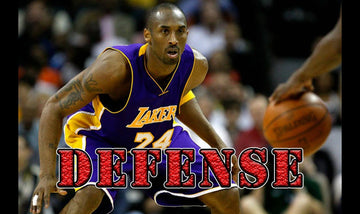In basketball, there are several defensive strategies that a team can utilize to prevent their opponent from scoring. Whether you're a player who wants to become a better defender or a coach seeking to improve your team's defense, it's important to know the fundamentals of every type of defense.
What Is Defense in Basketball?
A basketball defense refers to the defensive strategies, alignments, and positioning that a team uses to prevent the opposing offense from scoring baskets. In basketball, good defense requires quickness, footwork, and a deep understanding of the fundamentals. An individual defender works with his teammates to stifle scoring opportunities such as an open jump shot or lay up, box out to prevent an offensive rebound, and avoid fouling that will lead to a free throw. Ideally, a defense will secure a turnover, leading to a defensive possession in which the team can run a full-court fast break to set up a quick pull-up three-point shot. Basketball coaches typically assign their best defensive player to guard and close out the opposing team’s point guard, a ball-handling position that is often the highest scorer in the lineup.
5 Types of Defenses
Here is a comprehensive breakdown of the main types of defenses in basketball:

- Man-to-man defense
Man-to-man defense is a defensive formation in which a coach assigns each player on the line-up a specific offensive player to follow and defend on the court. For example, a small forward will guard a small forward in this defense. However, a coach may decide to switch assignments if the opposing team begins to exploit a defender’s weakness. It's also common for a player to briefly abandon their assignment to double-team the opposing team's star player in this defense. Man-to-man defense lets you force the dribbler towards the sidelines and baseline so you can trap them in a difficult location. This defense also makes it easier to box out in the paint and collect the rebound. Man-to-man can be useful for youth programs and high school teams because it's an effective way to teach fundamental skills and develop better basketball players.

- Zone defense
Zone defense is a defensive formation in which a coach assigns each player to cover a specific area of the court. In a zone scheme, a defender begins to guard an opponent when the opponent enters the defender's designated zone. Once the offensive player leaves the defender's zone, the defender continues protecting their zone instead of following the offensive player as they would in a man-to-man defense. Within the zone defense, there are different types of defensive schemes, each named after the alignment of the player zones. The first number in a zone scheme refers to the players closest to the top of the key, and the last number refers to players closest to the baseline under the hoop.

- Combination defense
A combination defense (also called a junk defense) is a combination of man-to-man and zone defensive schemes. Teams don't typically use combination defenses as their primary defensive strategy, but rather as a way to confuse their opponents at a point in the game when they need the momentum to change to their side. Combination defenses are risky because there's a higher chance that coverage will break down, so you should usually only utilize them when your team is outmatched. Some traditional combination defense schemes include match-up zone, box and one, diamond and one, and triangle and two.

- Full-court press defense
A full-court press is a defensive strategy where the defense applies constant pressure to the offensive team across the entire length of the court, beginning with the initial inbound pass (also called a throw-in). When executing a full-court press, teams can guard the offense using either man-to-man or zone schemes. Basketball teams most frequently start using a full-court press when they're losing late in the game and are desperate to force turnovers since the added pressure increases the chance of deflections and steals. You can also use a full-court press to fatigue your opponent. Full-court is a good defense to use against teams with mediocre ball handlers and teams who lack depth on the bench (since the offense will have to choose between playing fatigued starters or second-rate bench players).
- Half-court press defense
A half-court press is a defensive strategy where the defense applies pressure to the offense as soon as they begin to dribble or pass the ball over the half-court line. When executing a half-court press, teams can guard the offense using either man-to-man or zone schemes. Unlike the full-court press, which teams typically only utilize sporadically during a game, you can apply half-court press throughout an entire game. Like the full-court press, this defense’s goal is to force turnovers, fatigue the offense, and disrupt the game’s flow. From a strategic standpoint, the half-court press is much less risky than the full-court press because all of your defenders are already on the offensive half of the court (known as the frontcourt). Defensive basketball drills can be especially beneficial for players who want to improve their defensive stance and positioning.





